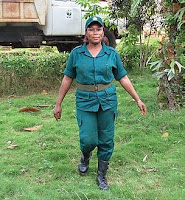 It's a common saying, "look before you leap", encouraging someone to thoroughly consider an action before taking it. Will mankind take it's own advice with a new moral dilemma?
It's a common saying, "look before you leap", encouraging someone to thoroughly consider an action before taking it. Will mankind take it's own advice with a new moral dilemma?A new substance has been discovered on the Moon called Helium 3. When heated to high temperatures in reactors on Earth it produces massive amounts of energy that have the potential to replace nuclear and fossil fuel energy sources around the world. These samples were acquired during the Apollo missions who collected Moon dirt and rocks for scientists to conduct experiments on.
This has created a new era of the Space Race. Countries including the USA, China and Russia as well as private organisations are investing millions of dollars in getting back to the moon and establishing a cost effective way of getting Helium 3 back to Earth.
Many questions still seem unanswered before man leaps back on to the Moon. Firstly, who owns the Moon? Opinions vary and there isn't a set of total clear laws or treaties ratified by the UN as outlined in this National Geographic article: http://news.nationalgeographic.com/news/2009/07/090717-who-owns-moon-real-estate.html. Secondly, should we start mining a land mass we know little about? On one hand it may offer the solution to Climate Change here on Earth. On the other hand, do we know enough to start mining a landscape with confidence that we will not do irreparable damage? Our track record on Earth isn't immaculate!
The documentary, Moon For Sale, gives an outline of the opportunities, challenges and issue. Taking both sides of the argument equally, does it help you decide....should we mine the Moon?































